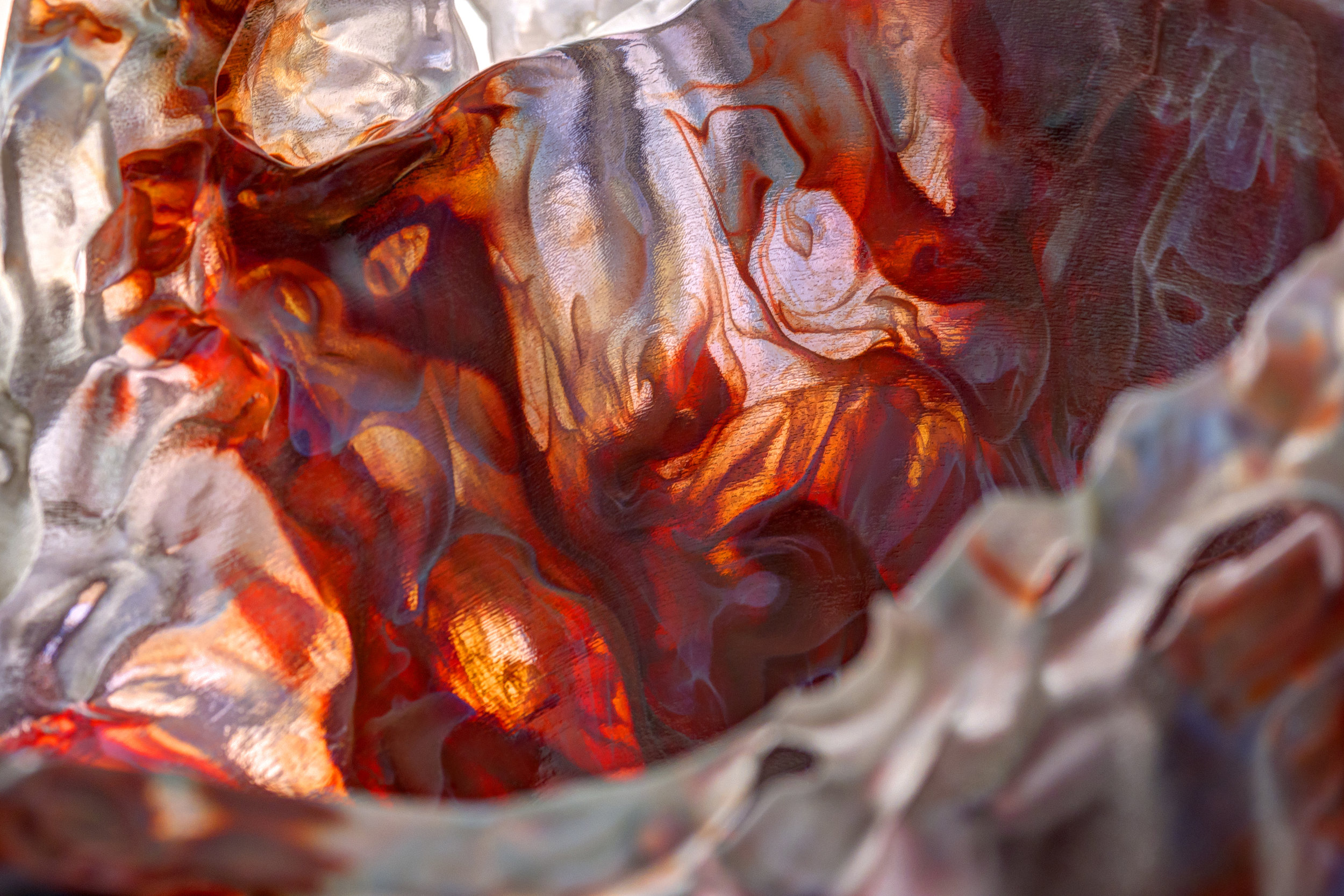VESPERS SERIES II
Novel technologies for 3D printing are enabling design and production at nature’s scale. We can seamlessly vary the physical properties of materials at the resolution of a sperm cell, a muscle cell, or a nerve cell. Stiffness, color, hygroscopy, transparency, conductivity, even scent, can be individually tuned for each three-dimensional pixel within a physical object. The generation of products is therefore no longer limited to assemblages of discrete parts with homogeneous properties. Rather like organs, objects can be computationally ‘grown’ and 3D printed to form materially heterogeneous and multi-functional products.Throughout history, technologies express the spirit of their age in design, and are embodied within the archetypes they create. Some archetypes—such as automobiles, airplanes, garments, prosthetic devices, and building skins—have evolved to improve the relationship between object, body, and environment. Others have become relics. The subject of Vespers, the next embodiment of the death mask, is a relic. The objects of Vespers are artifacts, which unite information architectures, manufacturing practices, and — at times — biological augmentation, to grow rather than assemble.
Vespers’ death masks, however, are not intended to memorialize the dead. They are designed to reveal cultural heritage and speculate about the perpetuation of life, both culturally and biologically. By pushing the boundaries of cusp technologies—such as high-resolution material modeling, multi-material 3D printing, and synthetic biology—they express the death mask’s deeper meanings and possible future utility, thus bringing it back to life.
───────
design and research by the Mediated Matter Group at the MIT Media Lab,
including Christoph Bader, Dominik Kolb, James Weaver, Prof. Neri Oxman
curated and 3D printed by Stratasys — debuted at the London Design Museum
photography by Yoram Reshef

















